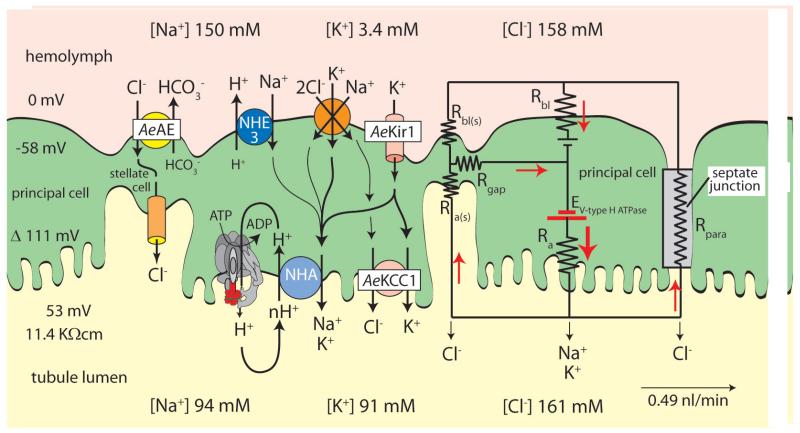Figure 1.
Mechanisms of transepithelial NaCl and KCl secretion in Malpighian tubules of the yellow fever mosquito Aedes aegypti. Transepithelial secretion of Na+ and K+ is active generating a lumen-positive voltage of 53 mV; transepithelial secretion of Cl− is passive. The transport of all three ions is energized by the V-type H+ ATPase located at the apical membrane of principal cells. The electrical circuit illustrates electrical coupling of transcellular cation transport and paracellular anion transport. The mosquito anion exchanger AeAE, the KCl cotransporter AeKCC1, and the inwardly rectifying K+ channel AeKir1 were recently cloned by our group [5-7]. E, electromotive force; R, electrical resistance; a, apical membrane; bl, basolateral membrane; para, paracellular pathway; (s), stellate cells. Although the tubule epithelium expresses the genes encoding subunits of the Na/K ATPase [8], we measured no significant ouabain-sensitive ATPase activity in Aedes Malpighian tubules [9].

